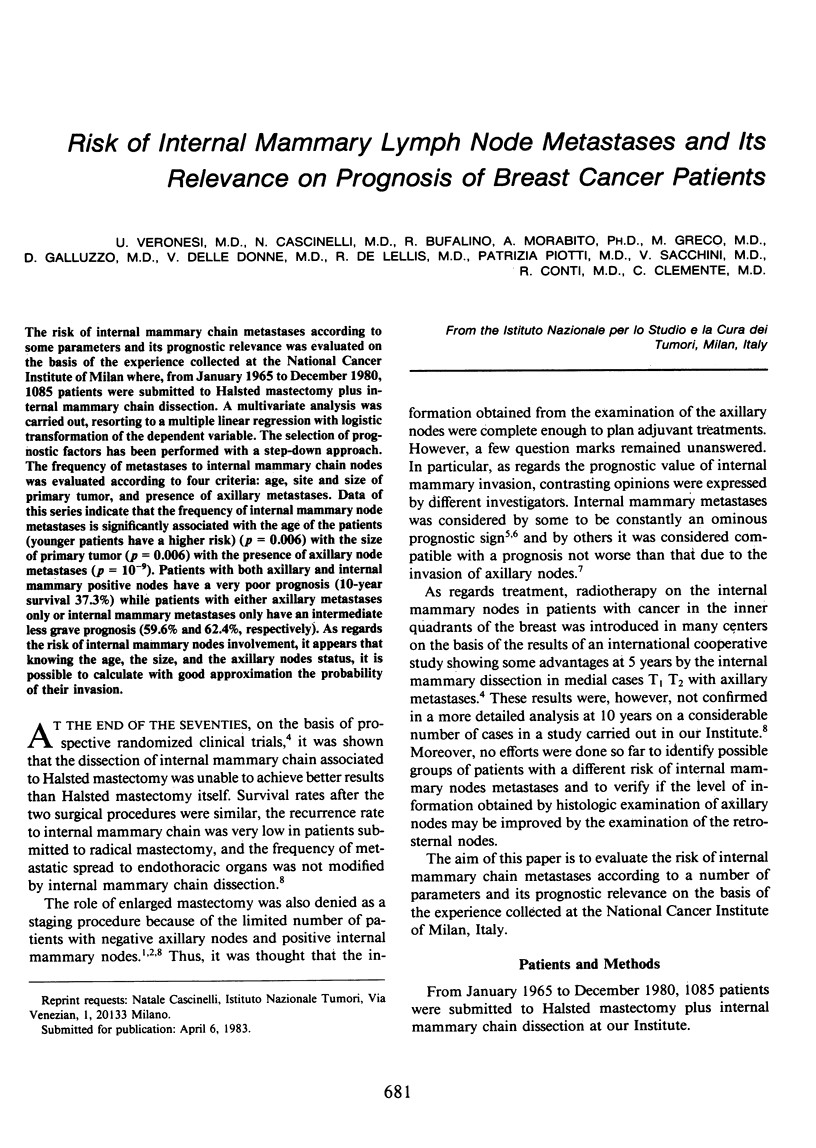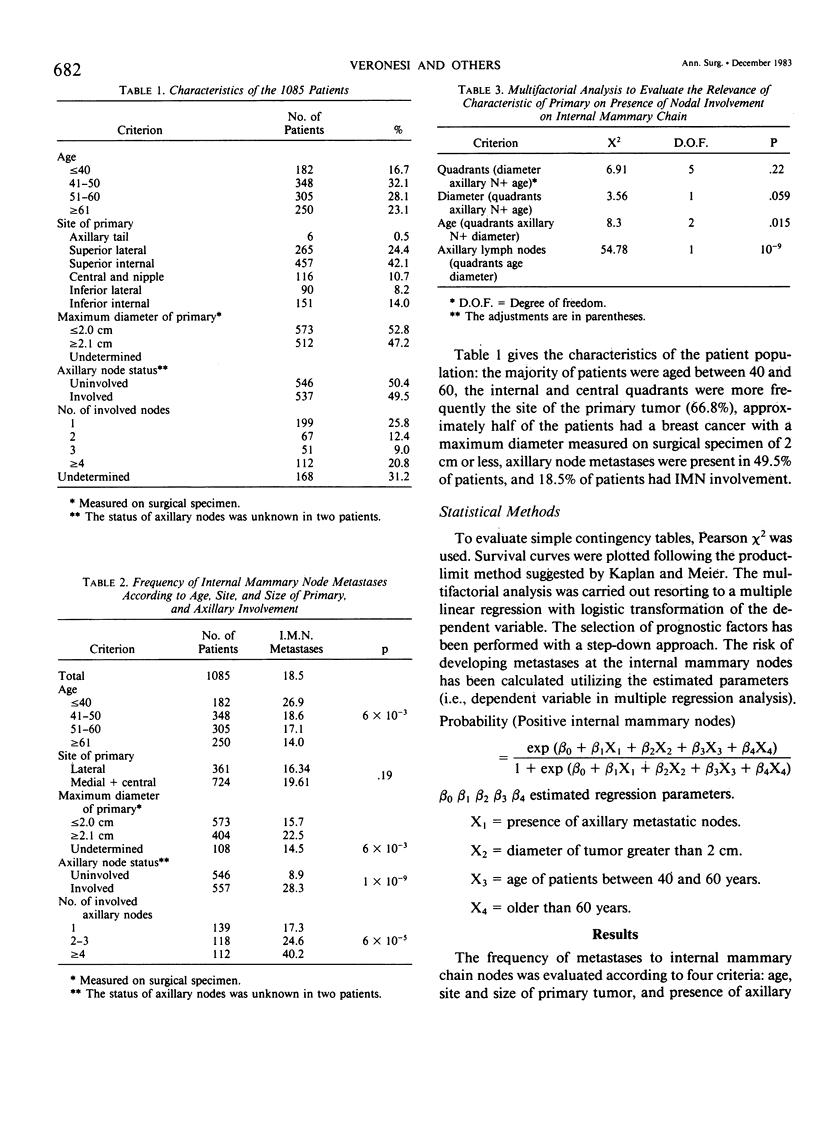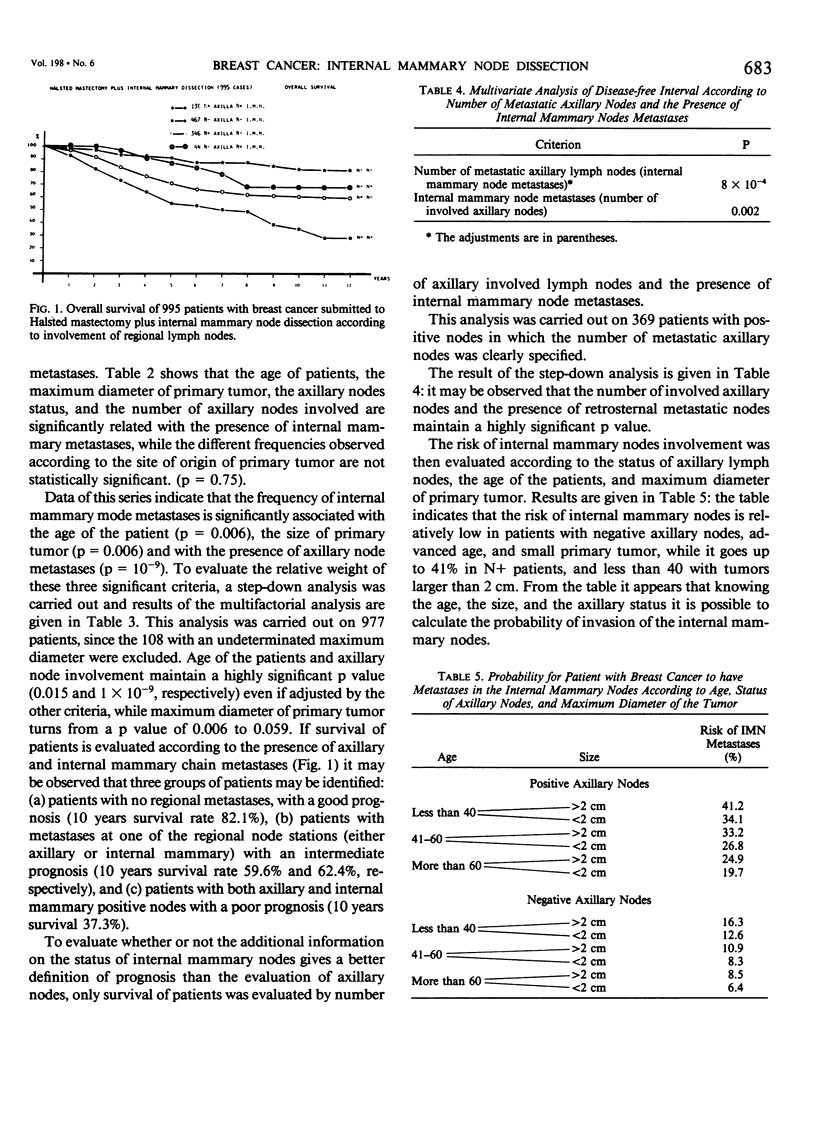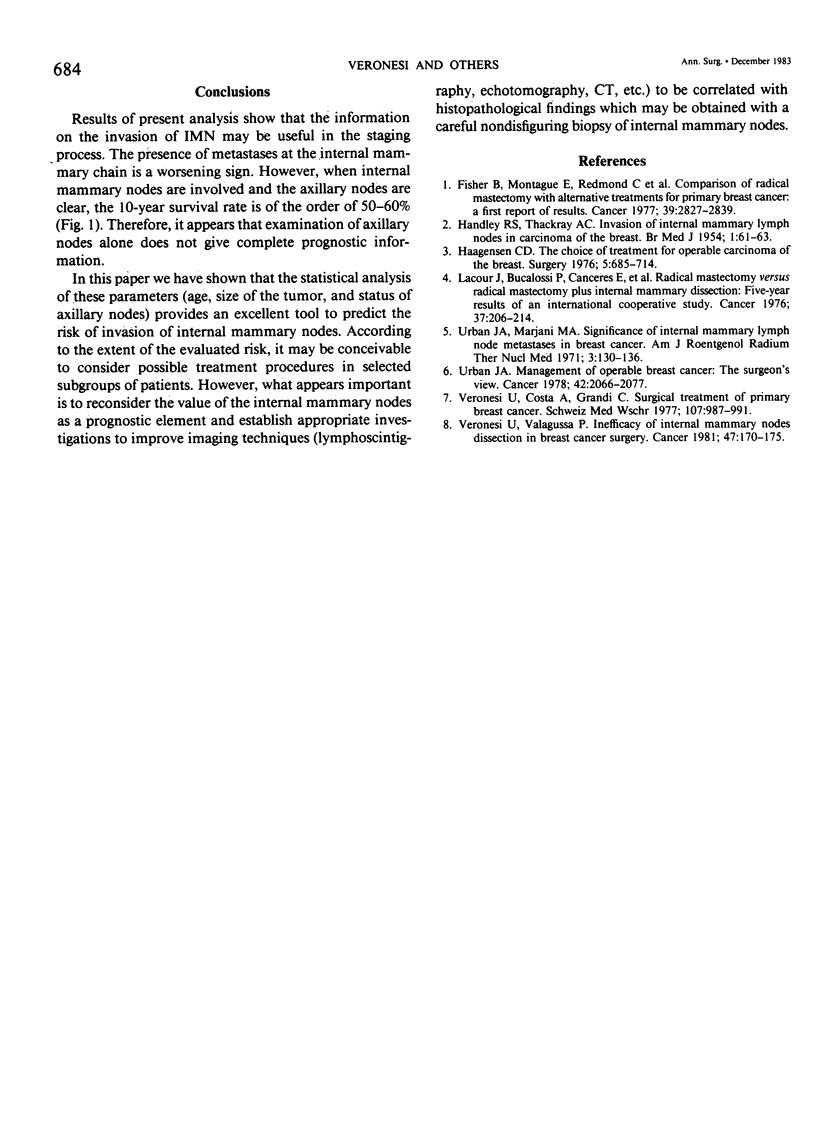Abstract
The risk of internal mammary chain metastases according to some parameters and its prognostic relevance was evaluated on the basis of the experience collected at the National Cancer Institute of Milan where, from January 1965 to December 1980, 1085 patients were submitted to Halsted mastectomy plus internal mammary chain dissection. A multivariate analysis was carried out, resorting to a multiple linear regression with logistic transformation of the dependent variable. The selection of prognostic factors has been performed with a step-down approach. The frequency of metastases to internal mammary chain nodes was evaluated according to four criteria: age, site and size of primary tumor, and presence of axillary metastases. Data of this series indicate that the frequency of internal mammary node metastases is significantly associated with the age of the patients (younger patients have a higher risk) (p = 0.006) with the size of primary tumor (p = 0.006) with the presence of axillary node metastases (p = 10(-9). Patients with both axillary and internal mammary positive nodes have a very poor prognosis (10-year survival 37.3%) while patients with either axillary metastases only or internal mammary metastases only have an intermediate less grave prognosis (59.6% and 62.4%, respectively). As regards the risk of internal mammary nodes involvement, it appears that knowing the age, the size, and the axillary nodes status, it is possible to calculate with good approximation the probability of their invasion.
Full text
PDF



Selected References
These references are in PubMed. This may not be the complete list of references from this article.
- Fisher B., Montague E., Redmond C., Barton B., Borland D., Fisher E. R., Deutsch M., Schwarz G., Margolese R., Donegan W. Comparison of radical mastectomy with alternative treatments for primary breast cancer. A first report of results from a prospective randomized clinical trial. Cancer. 1977 Jun;39(6 Suppl):2827–2839. doi: 10.1002/1097-0142(197706)39:6<2827::aid-cncr2820390671>3.0.co;2-i. [DOI] [PubMed] [Google Scholar]
- HANDLEY R. S., THACKRAY A. C. Invasion of internal mammary lymph nodes in carcinoma of the breast. Br Med J. 1954 Jan 9;1(4853):61–63. doi: 10.1136/bmj.1.4853.61. [DOI] [PMC free article] [PubMed] [Google Scholar]
- Lacour J., Bucalossi P., Cacers E., Jacobelli G., Koszarowski T., Le M., Rumeau-Rouquette C., Veronesi U. Radical mastectomy versus radical mastectomy plus internal mammary dissection. Five-year results of an international cooperative study. Cancer. 1976 Jan;37(1):206–214. doi: 10.1002/1097-0142(197601)37:1<206::aid-cncr2820370130>3.0.co;2-m. [DOI] [PubMed] [Google Scholar]
- Urban J. A. Management of operable breast cancer: the surgeon's view. Cancer. 1978 Oct;42(4):2066–2077. doi: 10.1002/1097-0142(197810)42:4<2066::aid-cncr2820420458>3.0.co;2-v. [DOI] [PubMed] [Google Scholar]
- Veronesi U., Costa A., Grandi C. Surgical treatment of primary breast cancer. Schweiz Med Wochenschr. 1977 Jul 16;107(28):987–991. [PubMed] [Google Scholar]
- Veronesi U., Valagussa P. Inefficacy of internal mammary nodes dissection in breast cancer surgery. Cancer. 1981 Jan 1;47(1):170–175. doi: 10.1002/1097-0142(19810101)47:1<170::aid-cncr2820470128>3.0.co;2-c. [DOI] [PubMed] [Google Scholar]


